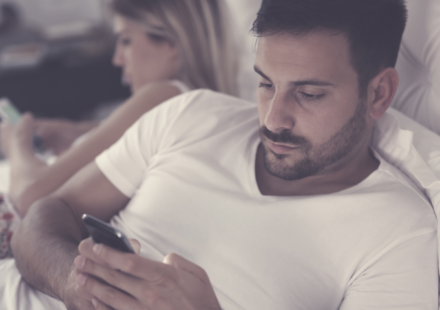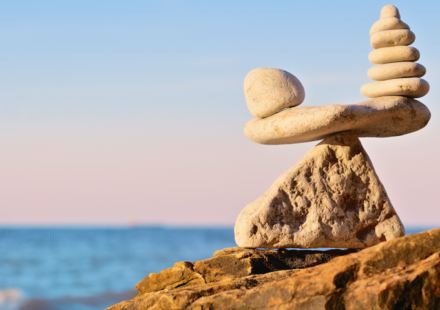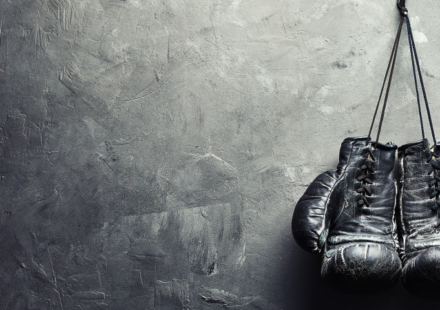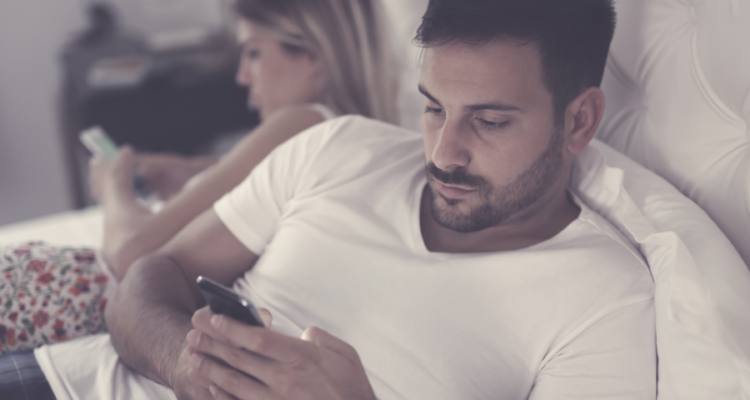They say the first step to recovery is admitting you have a problem. I, regrettably, have a problem. It’s embarrassing to admit, but I’m addicted to my smartphone…
To be clear, I’m not one of those cell phone junkies who peruses Facebook and Instagram several hours a day. I’m more of an email, text, market data, and Twitter junkie. Nevertheless, it’s a problem I’m out to conquer because my addiction is holding me back from maxing out my productivity. Plus, the more time you spend with your face in a screen, the more of LIFE passes you by.
Honestly, I have an itch right now to check my phone as I write this blog, but I won’t succumb. Maybe it is a disease, like being an alcoholic? I digress.
The second step to cure this illness is learning how to detox. I have to get the constant desire for screen time out of my system. The heart of the matter for me is that I am a person who likes to achieve things throughout my day. I like to check things off the ‘To Do’ list. So, when slow periods of the day arise, I look for my phone to teach me something or accomplish a task (respond to an email or text message).
Over the last two weeks I’ve come up with a 7 step program for ‘Digital Detoxing,’ and I think, if you’re like me, you’ll find it empowering. Addiction be gone!
My 7 Step Program to ‘Digital Detoxing’
1. Admit you have a problem: If you regularly have a desire to look at your phone while in a meeting, you have a problem. If you routinely feel the need to check your phone at the dinner table, you have a problem. If you check your phone while lying in bed at night, you likely have a problem. If you’re checking social media at your child’s soccer game, you have a problem. Admit that you have a problem, and then we can move forward.
2. Go off the grid for a minimum of twelve hours a week: You’re probably wondering why I didn’t say a whole day… Reality is, as entrepreneurs, that just isn’t feasible. However, disconnecting is essential, even if it is just for half a day (I recommend Sundays). By disconnecting, I mean no internet, phone and T.V. Nothing wired or connected to the net. There are numerous benefits to this, namely that it will enable your creativity to flourish and mind to operate without distraction and noise. Imagine what you could do in twelve hours of undistracted time. What would you do? Hike, shoot, write, exercise, cook, maybe golf?
3. Encourage face to face or telephone calls: Texting is the polite way to interrupt someone. But it is an interruption. Studies have shown that it takes a second to break one’s concentration and roughly twenty minutes to get it back. LifeHacker.com reported, “it takes an average of 23 minutes and 15 seconds to get back to the task” after being distracted. So, if a team member has a question, encourage them to email and ask when a good time to chat might be. There is tremendous value in this. Face to face is more focused — which leads to better ideas and brainstorming — is quicker, and shows intent on your part to assist that person. Everyone wins. Roughly 50% of communication is body language; another 30% is tone. Why wouldn’t you want face to face communication with your staff?
4. Set a definable time allowance for your phone: The average American spends a whopping 5 hours per day on their phone. Shocking, isn’t it? So let’s be realistic with our goals. If you’re an Instagram and Facebook junkie, set a time limit for how long you will be on those outlets. 15 minutes per day, maybe 30 minutes? Set it now and stick to it. You have to be able to measure whether you’re making progress. If you have my problem, set a text limit per person per day. If you’re in your 27th text of the day with the same person, pick up the damn phone and get the conversation over with.
 5. Leave your gadgets in another room: For the important things in life, such as dinner with family, time alone with your loved ones and even boardroom meetings, leave the phone in another room. Practice giving people your undivided attention until it becomes second nature.
5. Leave your gadgets in another room: For the important things in life, such as dinner with family, time alone with your loved ones and even boardroom meetings, leave the phone in another room. Practice giving people your undivided attention until it becomes second nature.
6. Hold yourself accountable by bragging: Tell people that you are ‘digital detoxing.’ It will make you more accountable because the people you tell, likely friends and family, will now be watching. No one wants to look like a bullshitter.
7. Purge newsletter subscriptions: The good thing about email is you can control, to some extent, what lands in your inbox. To start removing some of the digital distractions, go through your email and remove all newsletters which you don’t read or that provide little value. I bet this cuts down on nearly a third of the email you receive. Try it!
Our smartphones are incredibly powerful tools with tremendous benefit to entrepreneurs. However, like many things in life, overuse has negative consequences. I’d venture to guess that many of you reading this suffer from the same addiction I do; so recognize the problem. Use these seven steps to digital detox and improve your productivity and overall quality of life.
Stay hungry,

Aaron
P.S. Subscribe to my newsletter below to become a more aware and opportunistic entrepreneur. Stunning results can be achieved by making small changes in your daily life. Only my best content will land in your inbox.


















